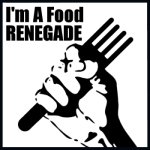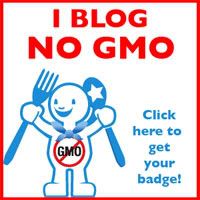 This week's share from our buying club offered a bounty for Cinco de Mayo fun. I chopped up Avocados, Cilantro, Jalapenos, Scallions, a ripe Mango from the week before, and Tomatoes into this incredible salsa. A squeeze of fresh Lime juice and a shake of Alea Hawaiin Sea Salt and it was unbelievably fresh and tasty with a bite that kept us going back for more.
This week's share from our buying club offered a bounty for Cinco de Mayo fun. I chopped up Avocados, Cilantro, Jalapenos, Scallions, a ripe Mango from the week before, and Tomatoes into this incredible salsa. A squeeze of fresh Lime juice and a shake of Alea Hawaiin Sea Salt and it was unbelievably fresh and tasty with a bite that kept us going back for more.- 1 avocado, cut into chunks
- 1 handful of cilantro chopped
- 1 mango, cut into chunks
- 2 good size roma tomatoes, cut into chunks
- 1/4 - 1/2 jalapeno, seeds, ribs and all because we like the heat, chopped very tiny
- 1-2 scallions chopped
- all the fresh juice of 1 lime
- 2 medium sized Sweet Potatoes, chopped, grated or sliced in thin strips
- 1/4 - 1/2 Red Pepper, chopped
- 1 Onion, chopped
- 1/4 Jalapeno, diced thin
- 1-2 Garlic cloves, chopped
 White salmon is a rare and delectable treat. It has a firm flesh and the flavor of Ivory or White salmon is more delicate than the Red Salmon. It is comparable to regular king salmon in omega 3s and less of a "fishy" taste from regular pink salmon.
White salmon is a rare and delectable treat. It has a firm flesh and the flavor of Ivory or White salmon is more delicate than the Red Salmon. It is comparable to regular king salmon in omega 3s and less of a "fishy" taste from regular pink salmon.Why White? The color variation is due to genetics. Salmon get their typical red or pink color from carotene in the food they eat (crustaceans such as shrimp and krill), but 1% of the salmon are genetically predisposed with an extra enzyme to process carotene rather than collect it. This can only occur in the wild so you can be assured your salmon is indeed "free range" when you buy Ivory or White Chinook Salmon.

Why Wild and not Farmed? Farmed sounds better, we are protecting the wild fish, right? But it's not that simple. When you hear farmed, think agri-business, think of those huge dairy and cattle farms and chicken pens where they sit on top of one another. Ah, it's getting clearer now.
 Yes, the fish are raised in confined areas (cages or nets) in the ocean. "Ocean-raised" is another name for farmed fish so don't be fooled there. The fish do not have room to move and are treated much like conventional livestock on top of one another to maximize profit.
Yes, the fish are raised in confined areas (cages or nets) in the ocean. "Ocean-raised" is another name for farmed fish so don't be fooled there. The fish do not have room to move and are treated much like conventional livestock on top of one another to maximize profit.
They don't get to use their muscles and really swim as they should. They are in close proximity to one another and therefore, like other animals raised in big agri-business, are prone to sickness. They are infested with sea lice (30,000 times more than normally occurring in the sea!)
If and when they get out, (and they DO get out - some by accident while others are let out on purpose to get rid of a sick population of fish easily) they mingle with the wild fish which in turn gets them sick. They infest the surrounding sea with disease and sea lice.
If they are not sick when they get out, the wreak havoc on the delicate ecosystem - they are super-fish that eat more than the regular wild salmon. The farmed fish are genetically engineered salmon and they are sadly taking over the environment.
Since they are in such close living quarters, like the beef and chickens on big conventional farms, they are routinely fed antibiotics. According to the Union of Concerned Scientists (www.ucsusa.org), over 68% of all seafood consumed in the United States is imported, and most of it is industrially produced. Most are farm-raised and have little oversight regarding antibiotic drug use. While the U.S. government has standards that should ban imports with high levels of antibiotics in seafood, there is essentially no enforcement.
Farmed salmon have more antibiotics administered by weight than any other form of livestock. Farmed salmon have significantly higher levels of PCBs, dioxin, and other cancer causing agents over wild salmon.
Farmed fish are fed coloring agents (no doubt petroleum-based) to give them that pinkish blush we are accustomed to seeing, otherwise they'd be a blah unappetizing grey.
Farmed fish are fed pellets and undoubtedly contain GMO and soy in the grind. Those pellets DO NOT get converted by the fish to make the powerful omega 3s for us like the wild salmon's regular food. Farm raised salmon doesn't have as high nutritional value. Omega 3s are an essential fatty acid that are most easily found in fatty fish like salmon and tuna. It can be found to a lesser extent in some seeds and nuts including walnuts, chia & flax seeds, but our bodies don't convert the foods into omega 3s the same way so the best source is fish.
We didn't even discuss flavor, there is absolutely no comparison. I always thought I hated salmon until I had real wild salmon. It is delicious.
 Wild is the only sustainable approach to fishing as long as they are not using those nets that pick up everything from the ocean killing innocent fish that are destined for nothing more than to be tossed overboard. I choose Vital Choice brand because they sustainably harvest. Their fish are line caught by hand from the pristine Pacific waters. They explain that only two percent of the Alaskan Salmon are caught by line and all of their fish are line caught. Net fishing damages habitats making more species endangered.
Wild is the only sustainable approach to fishing as long as they are not using those nets that pick up everything from the ocean killing innocent fish that are destined for nothing more than to be tossed overboard. I choose Vital Choice brand because they sustainably harvest. Their fish are line caught by hand from the pristine Pacific waters. They explain that only two percent of the Alaskan Salmon are caught by line and all of their fish are line caught. Net fishing damages habitats making more species endangered.
Yes, it's more expensive, it's cheaper to throw in a net and catch some and kill a few other things. But then again, there is a lot more nutritional bang for your buck in a wild salmon so cheap is all relative. Our choice of what to buy and feed our loved ones impacts our lives, our future, and our planet so choose carefully and if you think it's too expensive, just eat less of it. Cheap is not food. Choose food not cheap.
Then there was that article in the NY Times about the farmed fish being sold as wild for more money. You are more likely to have wild salmon if it is frozen, unless you live on the Pacific coast, but here on the East coast, I only eat salmon that is fresh frozen on the boat the same day it is caught - it doesn't get any fresher. It is incumbent upon us as the consumers to choose a source we trust and understand the facts.
Farmed salmon are administered antibiotics, pesticides, synthetic coloring agents, growth hormones and GMOs. Wild Salmon is also much higher in heart and brain healthy Omega 3s and just taste so much better. In my mind, and I hope you agree, WILD fish is the only choice. And of the wild fish available, please learn which are safest (lowest in mercury, flourishing in a healthy habitat, and not over-fished) to make a sustainable choice for your table and our future. Check out the Seafood Selector by the Environmental Defense Fund and Seafood Watch by Monterey Bay Aquarium.
 This is part of Food Renegade's FIGHT BACK FRIDAYS where people who are fighting back against the dominate food culture blog about our adventures in real food including:
This is part of Food Renegade's FIGHT BACK FRIDAYS where people who are fighting back against the dominate food culture blog about our adventures in real food including:
 Yes, the fish are raised in confined areas (cages or nets) in the ocean. "Ocean-raised" is another name for farmed fish so don't be fooled there. The fish do not have room to move and are treated much like conventional livestock on top of one another to maximize profit.
Yes, the fish are raised in confined areas (cages or nets) in the ocean. "Ocean-raised" is another name for farmed fish so don't be fooled there. The fish do not have room to move and are treated much like conventional livestock on top of one another to maximize profit.They don't get to use their muscles and really swim as they should. They are in close proximity to one another and therefore, like other animals raised in big agri-business, are prone to sickness. They are infested with sea lice (30,000 times more than normally occurring in the sea!)
If and when they get out, (and they DO get out - some by accident while others are let out on purpose to get rid of a sick population of fish easily) they mingle with the wild fish which in turn gets them sick. They infest the surrounding sea with disease and sea lice.
If they are not sick when they get out, the wreak havoc on the delicate ecosystem - they are super-fish that eat more than the regular wild salmon. The farmed fish are genetically engineered salmon and they are sadly taking over the environment.
Since they are in such close living quarters, like the beef and chickens on big conventional farms, they are routinely fed antibiotics. According to the Union of Concerned Scientists (www.ucsusa.org), over 68% of all seafood consumed in the United States is imported, and most of it is industrially produced. Most are farm-raised and have little oversight regarding antibiotic drug use. While the U.S. government has standards that should ban imports with high levels of antibiotics in seafood, there is essentially no enforcement.
Farmed salmon have more antibiotics administered by weight than any other form of livestock. Farmed salmon have significantly higher levels of PCBs, dioxin, and other cancer causing agents over wild salmon.
Farmed fish are fed coloring agents (no doubt petroleum-based) to give them that pinkish blush we are accustomed to seeing, otherwise they'd be a blah unappetizing grey.
Farmed fish are fed pellets and undoubtedly contain GMO and soy in the grind. Those pellets DO NOT get converted by the fish to make the powerful omega 3s for us like the wild salmon's regular food. Farm raised salmon doesn't have as high nutritional value. Omega 3s are an essential fatty acid that are most easily found in fatty fish like salmon and tuna. It can be found to a lesser extent in some seeds and nuts including walnuts, chia & flax seeds, but our bodies don't convert the foods into omega 3s the same way so the best source is fish.
We didn't even discuss flavor, there is absolutely no comparison. I always thought I hated salmon until I had real wild salmon. It is delicious.
 Wild is the only sustainable approach to fishing as long as they are not using those nets that pick up everything from the ocean killing innocent fish that are destined for nothing more than to be tossed overboard. I choose Vital Choice brand because they sustainably harvest. Their fish are line caught by hand from the pristine Pacific waters. They explain that only two percent of the Alaskan Salmon are caught by line and all of their fish are line caught. Net fishing damages habitats making more species endangered.
Wild is the only sustainable approach to fishing as long as they are not using those nets that pick up everything from the ocean killing innocent fish that are destined for nothing more than to be tossed overboard. I choose Vital Choice brand because they sustainably harvest. Their fish are line caught by hand from the pristine Pacific waters. They explain that only two percent of the Alaskan Salmon are caught by line and all of their fish are line caught. Net fishing damages habitats making more species endangered.Yes, it's more expensive, it's cheaper to throw in a net and catch some and kill a few other things. But then again, there is a lot more nutritional bang for your buck in a wild salmon so cheap is all relative. Our choice of what to buy and feed our loved ones impacts our lives, our future, and our planet so choose carefully and if you think it's too expensive, just eat less of it. Cheap is not food. Choose food not cheap.
Then there was that article in the NY Times about the farmed fish being sold as wild for more money. You are more likely to have wild salmon if it is frozen, unless you live on the Pacific coast, but here on the East coast, I only eat salmon that is fresh frozen on the boat the same day it is caught - it doesn't get any fresher. It is incumbent upon us as the consumers to choose a source we trust and understand the facts.
Farmed salmon are administered antibiotics, pesticides, synthetic coloring agents, growth hormones and GMOs. Wild Salmon is also much higher in heart and brain healthy Omega 3s and just taste so much better. In my mind, and I hope you agree, WILD fish is the only choice. And of the wild fish available, please learn which are safest (lowest in mercury, flourishing in a healthy habitat, and not over-fished) to make a sustainable choice for your table and our future. Check out the Seafood Selector by the Environmental Defense Fund and Seafood Watch by Monterey Bay Aquarium.
 This is part of Food Renegade's FIGHT BACK FRIDAYS where people who are fighting back against the dominate food culture blog about our adventures in real food including:
This is part of Food Renegade's FIGHT BACK FRIDAYS where people who are fighting back against the dominate food culture blog about our adventures in real food including:- updates & stories about our Real Food journey,
- tips,
- recipes,
- anything we think others might find useful, helpful, encouraging, or inspiring.



























Where's the recipe for the hash!? That's the one I want.
ReplyDeletesorry I added it now but here you go - 2 med sweet potatoes, julienned or shredded, 1/2 red pepper chopped, 1 onion chopped, 1/4 to 1/2 jalapeno minced, 1 avg size onion chopped.
ReplyDeleteHeat pan with olive oil on medium high. Add sweet potatoes and cover to cook. You'll want to turn it every couple minutes so the bottoms don't burn. When almost tender add onions, garlic, red bell pepper, jalapeno, and saute until onions are translucent and potatoes are tender. We have served eggs over it and today fish.
Oh I love sweet potato hash. And that mango salsa looks amazing. I can't wait until we start getting more tomatoes. I got a couple a few weeks back from our CSA, but haven't seen any since.
ReplyDeleteAnd thanks for sharing this in today's Fight Back Fridays carnival! I've missed your posts.
Cheers,
KristenM
(AKA FoodRenegade)